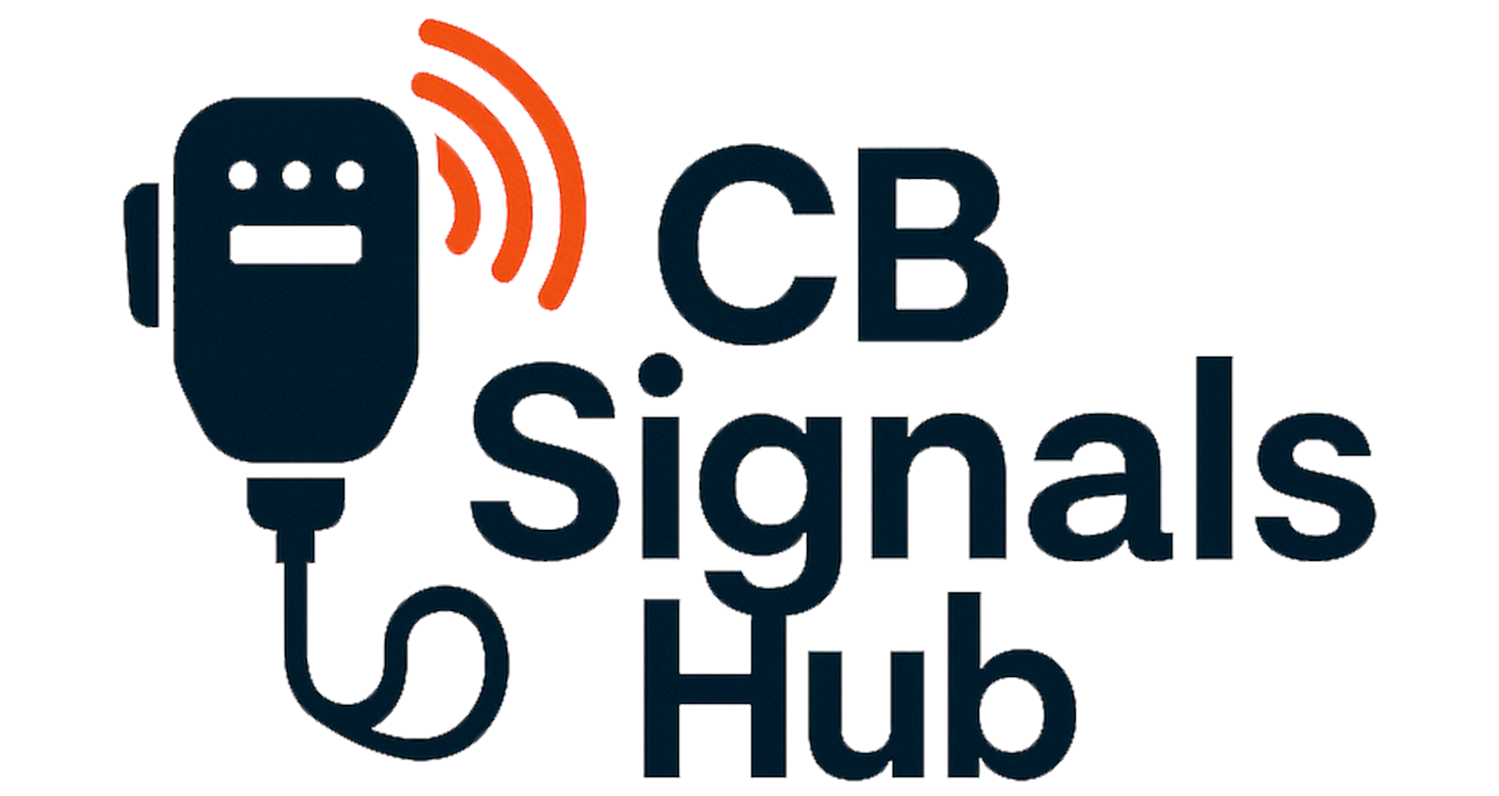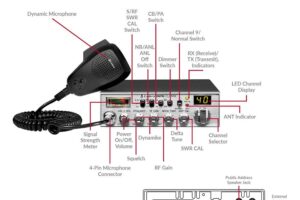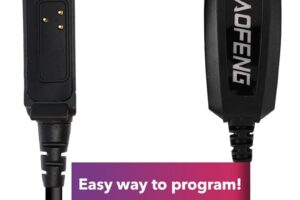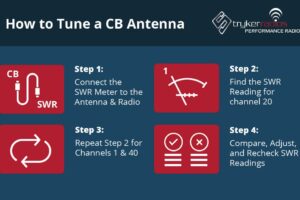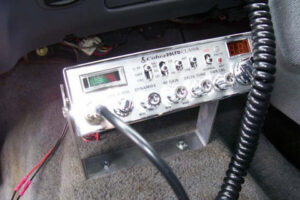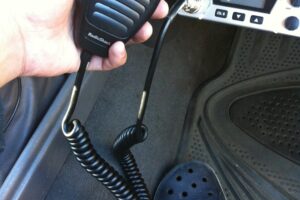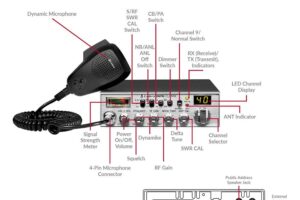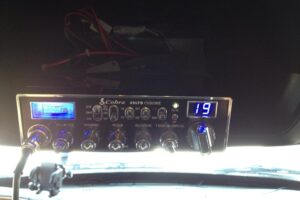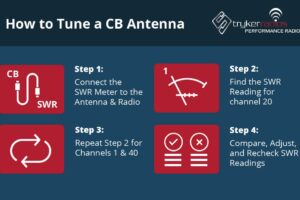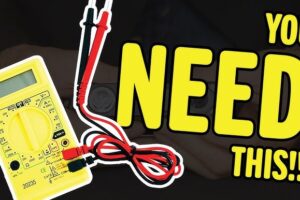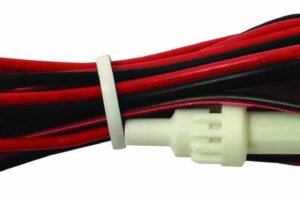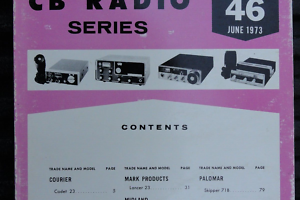How to Tell If a CB Radio is Bad: Quick and Easy Tips
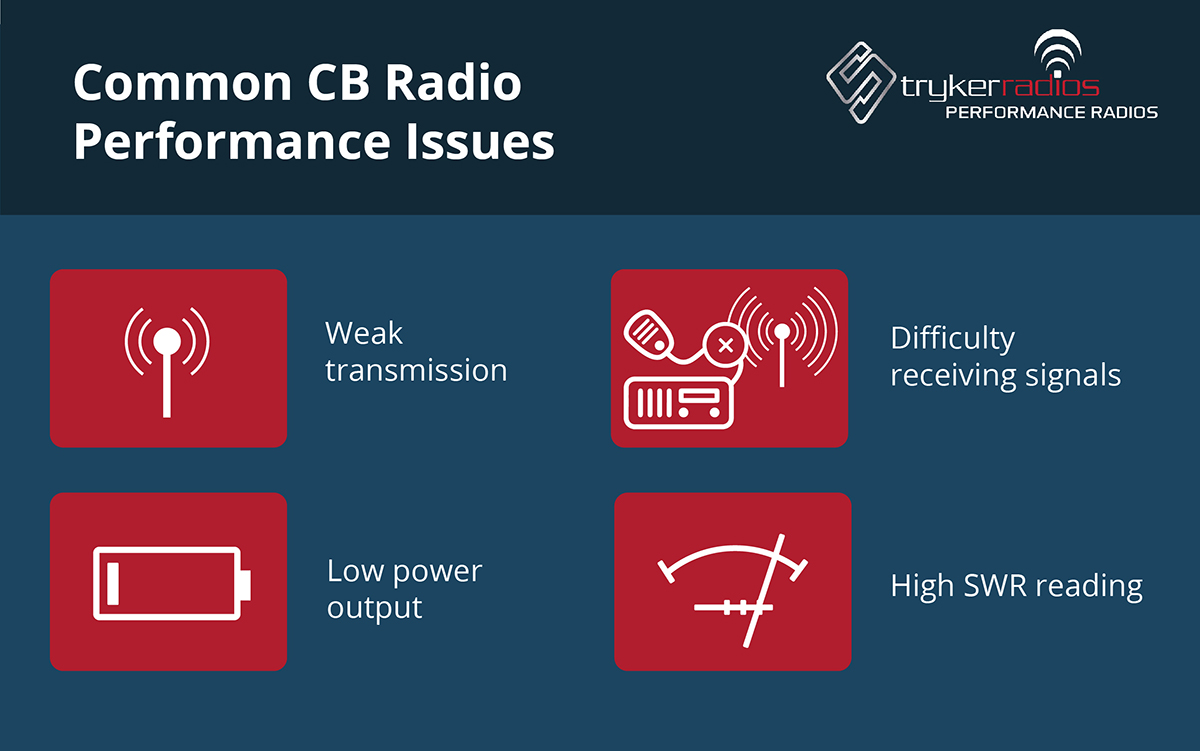
A CB radio can be a lifeline for communication, especially when other methods fail. Knowing if your CB radio is faulty is crucial.
So, how can you tell if a CB radio is bad? First, check for obvious signs like no power, static, or poor sound. These are clear indicators that something might be wrong. Sometimes the issue is simple and easy to fix.
Other times, it may be more complex. Understanding these signs can save you time and frustration. This guide will help you identify common problems with CB radios, so you can get back on the air quickly and safely. Whether you’re a trucker, hobbyist, or emergency responder, knowing how to diagnose CB radio issues is essential. Let’s dive into the details and get your radio working properly.
Signs Of A Bad Cb Radio
Poor reception and static are common signs of a bad CB radio. Frequent signal drops and unclear transmissions also indicate issues. Be cautious if tuning doesn’t improve clarity.
If you rely on a CB radio, knowing when it’s time for a replacement can save you a lot of frustration. Identifying a bad CB radio isn’t always straightforward, but there are a few signs that can help you diagnose the problem. Let’s break down some common indicators of a faulty CB radio.
Poor Reception
One of the first signs of a bad CB radio is poor reception. If you notice that your radio is not picking up signals as clearly as it used to, this could be a red flag. Static, frequent dropouts, or weak signal strength are all indicators.
Imagine you’re on a road trip and your CB radio, which used to work perfectly, now only delivers garbled messages. This could mean the antenna is damaged or the internal components are failing.
Check if the antenna is properly connected and not broken. Sometimes, simply adjusting the antenna can improve reception. However, if the issue persists, it might be time for a new radio.
No Transmission
Another telltale sign is when your CB radio stops transmitting. If your voice isn’t reaching other users, your radio might be on its last legs. You might hear others, but they can’t hear you.
This can be a critical issue, especially in emergency situations. I remember once trying to alert a fellow driver about road hazards, only to find out my radio wasn’t transmitting.
First, ensure the microphone is securely connected. Test it on a different radio if possible. If everything checks out and it still doesn’t work, the problem likely lies within the radio itself.
Diagnosing a bad CB radio requires attention to these signs. Poor reception and no transmission are key indicators. By understanding these issues, you can make an informed decision about whether to repair or replace your CB radio.
Testing The Antenna
Testing the antenna is a crucial step in checking if your CB radio is bad. A faulty antenna can lead to poor signal reception, making communication difficult. Let’s explore how you can test the antenna using simple methods.
Visual Inspection
Start with a visual inspection of the antenna. Look for any obvious signs of damage. Check if the antenna is bent or broken. Inspect the connections to ensure they are tight and secure. Loose connections can cause signal issues.
Using An Swr Meter
An SWR meter can help you test the antenna’s performance. Connect the SWR meter between the antenna and the CB radio. Turn on the radio and set it to channel 1. Measure the SWR reading. A good reading should be below 2:1.
Switch to channel 40 and take another reading. Compare the readings from both channels. Consistent readings indicate the antenna is working well. High readings on both channels suggest the antenna needs adjustment or replacement.
Checking Power Supply
When your CB radio isn’t working as expected, one of the first things you should check is the power supply. A faulty power supply can lead to inconsistent performance or even prevent your radio from turning on. Let’s break down the steps to ensure your power supply is functioning properly.
Inspecting Connections
First, examine all the connections. Ensure that the power cable is securely plugged into both the radio and the power source. Loose connections can lead to intermittent power issues.
Check for any visible damage to the cables. Frayed or broken wires can interrupt the flow of electricity, causing your CB radio to malfunction. If you find any damage, replacing the cable might be necessary.
Measuring Voltage
Next, measure the voltage from the power source. You can use a multimeter to check if the power supply is delivering the correct voltage to your CB radio.
Set the multimeter to the appropriate voltage range. Place the red probe on the positive terminal and the black probe on the negative terminal. A standard CB radio usually requires 12 volts, so ensure your reading is close to this value.
If the voltage is significantly lower, you may need to troubleshoot the power source itself or consider using a different power supply.
Have you ever found your CB radio acting up in the middle of a crucial conversation? By checking these simple steps, you might just save yourself from unnecessary frustration. Maintaining your power supply is key to a reliable CB radio experience.

Credit: www.facebook.com
Assessing Microphone Functionality
Assessing the functionality of your CB radio’s microphone is crucial for clear communication. A faulty microphone can lead to poor audio quality, making it difficult for others to understand you. By paying attention to specific indicators, you can determine if your microphone is the culprit.
Audio Quality
First, listen to the audio quality. Clear and consistent sound is a good sign. If your voice sounds muffled, distorted, or cuts in and out, there’s a problem.
Try speaking at different volumes. Ask a friend to provide feedback on how you sound. If they report static, echoes, or other anomalies, your microphone might be failing.
Consider your surroundings. Background noise can affect audio quality. Ensure you’re in a quiet environment when testing the microphone.
Wiring Issues
Inspect the microphone’s wiring. Loose or frayed wires can cause connectivity problems. Gently wiggle the wires and connectors while speaking to see if the audio quality changes.
Check the connector pins. Bent or dirty pins can impede proper connection. Use a soft cloth or brush to clean the pins if necessary.
Look for visible damage. Cracks or exposed wires indicate wear and tear. In such cases, replacing the microphone may be the best solution.
Have you ever replaced a microphone before? What challenges did you face? Share your experiences in the comments below.
By focusing on audio quality and wiring issues, you can quickly identify whether your CB radio’s microphone is in good working order. Simple checks and minor adjustments can often resolve the problem, ensuring clear communication on the road.
Evaluating Speaker Performance
Evaluating speaker performance is essential to determine if your CB radio is in good condition. The speaker is the main component for clear audio transmission. A bad speaker can lead to communication issues. Let’s explore some key areas to check.
Distorted Sound
Distorted sound is a common sign of a bad CB radio speaker. If the sound is unclear or fuzzy, the speaker might be failing. Listen for crackling noises or muffled voices. These issues can make it hard to understand messages. Check if the distortion happens at all volume levels. Consistent distortion indicates a speaker problem.
Volume Problems
Volume problems can also signal a bad speaker. Test the radio at different volume settings. If the volume is too low or inaudible, the speaker may be defective. Sudden changes in volume are another red flag. This inconsistency makes communication difficult. Ensure the volume control knob works smoothly. If the volume remains low, replacing the speaker might be necessary.
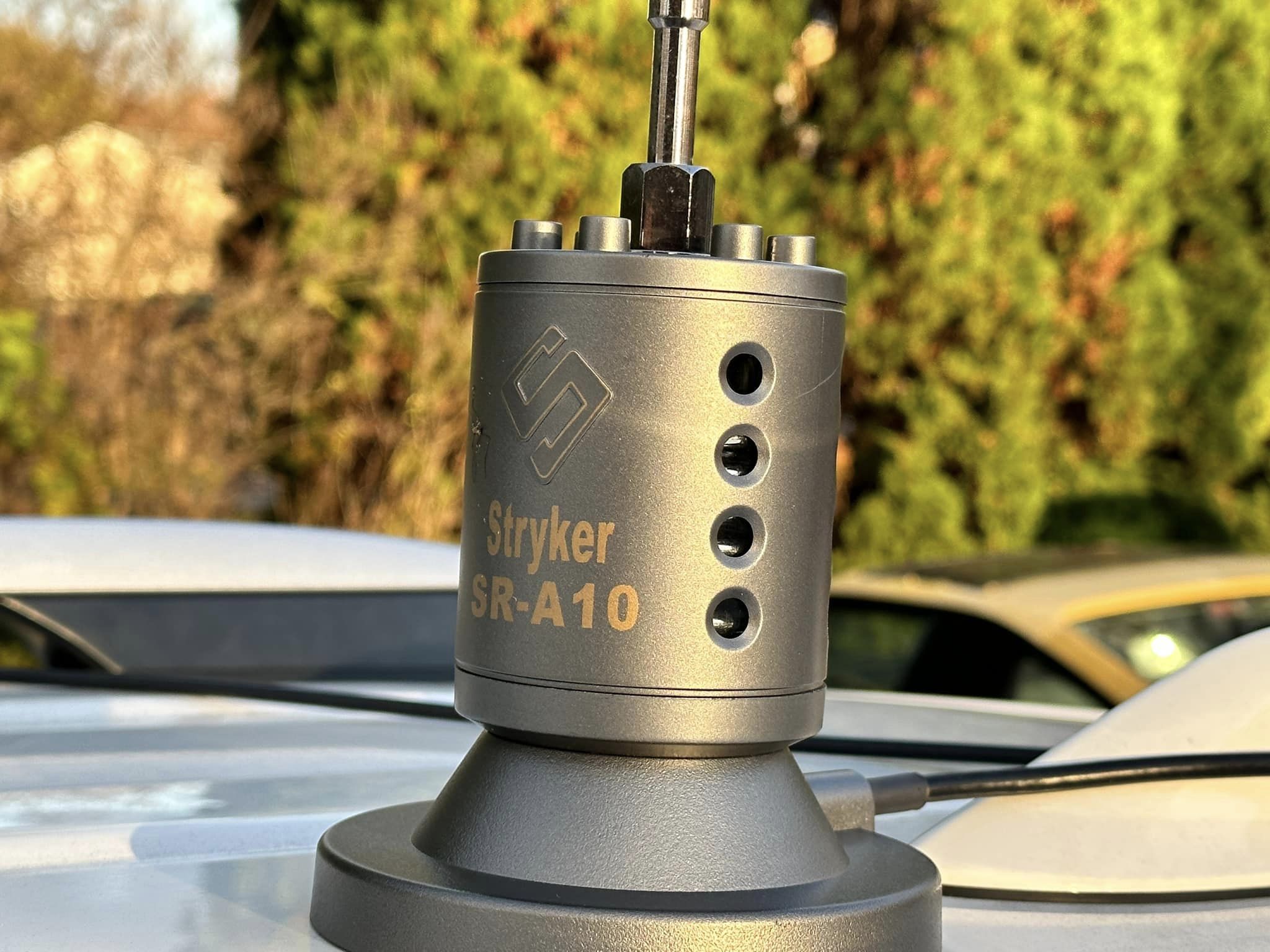
Credit: strykerradios.com
Interference Issues
Interference issues are common in CB radios. Understanding these problems can help you identify if your CB radio is bad. Interference can come from external sources or from within the radio itself. Addressing these issues ensures clear communication and better performance.
External Interference
External interference can affect your CB radio’s performance. Sources include nearby electronic devices, power lines, and other radios. These can cause static, buzzing, or unclear transmissions. To check, turn off nearby electronics and listen for changes. Moving to a different location can also help identify external interference.
Internal Noise
Internal noise originates from within the CB radio. It can be caused by faulty components or poor connections. Signs include hiss, pops, or irregular sounds during transmissions. Inspect the radio’s wiring and connections. Clean and tighten any loose parts. If the noise persists, the radio may need professional repair.
Troubleshooting Techniques
Is your CB radio acting up? Don’t worry, you can often fix issues yourself with some simple troubleshooting techniques. If your radio isn’t working correctly, these steps might save you from unnecessary frustration and help you get back on track.
Resetting The Radio
Sometimes, all your CB radio needs is a reset. This can clear temporary glitches and restore normal function. To reset, turn off the radio and disconnect the power source. Wait for a few minutes before reconnecting and powering it back on.
Have you ever had to reset your phone to fix a problem? It’s the same concept here. A reset can solve many minor issues quickly. If your radio powers up without problems after this, you’ve likely fixed the issue.
Reprogramming Channels
If your radio is still not working after a reset, it might be time to reprogram the channels. Misconfigured channels can cause reception issues. Check your user manual for the correct programming procedure.
Reprogramming channels can be a bit tricky, but it’s doable. Make sure you have the right frequency information. This ensures you’re tuning into the correct stations and getting the best reception.
Have you considered how many times you’ve had to reprogram your TV channels? It’s a similar process, but for your CB radio. Correct programming can fix those pesky reception problems.
What troubleshooting techniques do you use when your devices malfunction? Have you tried resetting or reprogramming before? Share your experiences and tips below!
Maintenance Tips
Maintaining your CB radio ensures it works well and lasts long. Regular upkeep can prevent issues and keep your device in top shape. Here are some essential maintenance tips to help you keep your CB radio in good condition.
Regular Cleaning
Dirt and dust can affect your CB radio’s performance. Clean it regularly using a soft, dry cloth. Avoid using harsh chemicals. They can damage the radio’s surface and internal components. Pay special attention to the buttons and display screen. These areas can accumulate the most grime. A clean radio works better and lasts longer.
Proper Storage
Store your CB radio in a cool, dry place when not in use. Moisture can damage the electronic components. Extreme temperatures can also affect its performance. Use a protective case if you need to transport it. This will shield it from physical damage and dust. Proper storage is key to extending your radio’s lifespan.

Credit: www.wearecb.com
Frequently Asked Questions
How To Know If Cb Is Bad?
Check for flickering lights, tripped breakers, and unusual sounds. Inspect for burnt smells or visible damage. Consult a professional.
What Makes A Cb Radio Stop Working?
A CB radio may stop working due to a blown fuse, poor antenna connection, damaged wiring, or power supply issues.
What Are The Symptoms Of A Bad Cb Coax?
Static or intermittent signals, poor transmission quality, high SWR readings, and failure to communicate effectively can indicate a bad CB coax.
How Do I Ask For A Radio Check On A Cb?
To ask for a radio check on a CB, say, “Radio check, please. ” Wait for a response to confirm your signal quality.
Conclusion
Diagnosing a bad CB radio isn’t hard with these tips. Listen for static or poor sound quality. Check connections and antennas. Look for power issues. These signs often indicate trouble. Regular maintenance helps prevent problems. Keep the radio clean and check cables.
Replace damaged parts promptly. Better performance follows careful upkeep. With these strategies, you can ensure your CB radio works well. Reliable communication is key for a smooth experience. Stay alert to any signs of malfunction and act quickly. Enjoy uninterrupted conversations with your CB radio.
